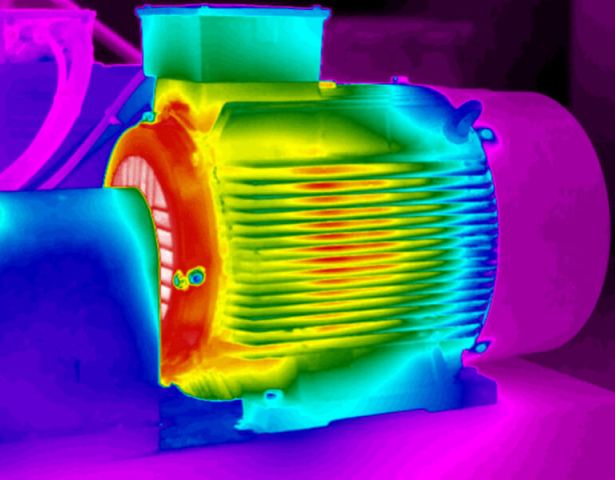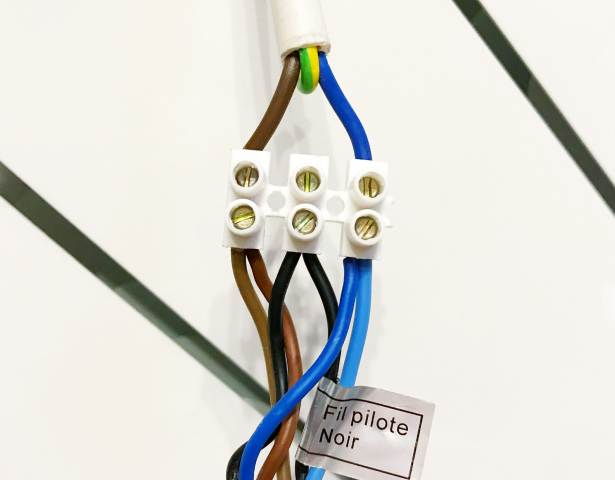Categories: Featured Articles » Novice electricians
Number of views: 1681
Comments on the article: 0
Thermal action of current, current density and their influence on the heating of conductors
By the thermal action of an electric current is understood the release of thermal energy during the passage of current through a conductor. When a current passes through the conductor, the free electrons forming the current collide with the ions and atoms of the conductor, heating it.
The amount of heat released in this case can be determined using Joule-Lenz Law, which is formulated as follows: the amount of heat released during the passage of electric current through the conductor is equal to the product of the square of the current, the resistance of this conductor and the time it takes for the current to pass through the conductor.

Taking the current in amperes, the resistance in ohms, and the time in seconds, we get the amount of heat in joules. And given that the product of the current and resistance are the voltage, and the product of the voltage and current is the power, it turns out that the amount of heat released in this case is equal to the amount of electric energy transferred to this conductor during the passage of current through it. That is, electrical energy is converted into heat.
The receipt of thermal energy from electrical energy has been widely used since ancient times in various techniques. Electric heaters, such as heaters, water heaters, electric stoves, soldering irons, electric furnaces, etc., as well as electric welding, incandescent lamps and much more, use this principle to generate heat.

But in a large number of electrical devices, heating caused by current is harmful: electric motors, transformers, wires, electromagnets, etc. - in these devices that are not designed to produce heat, heating reduces their efficiency, interferes with efficient operation, and can even lead to emergency situations.
For any conductor, depending on the environmental parameters, a certain acceptable value of the current value is characteristic at which the conductor does not noticeably heat up.
So, for example, to find the permissible current load on the wires, use the parameter "Current density", characterizing the current per 1 sq. mm of the cross-sectional area of this conductor.
The permissible current density for each conductive material under certain conditions is different, it depends on many factors: on the type of insulation, cooling rate, ambient temperature, cross-sectional area, etc.

For example, for electric machines, where the windings are made, as a rule, of copper, the maximum permissible current density should not exceed 3-6 amperes per square mm. For an incandescent lamp, and more precisely for its tungsten filament, not more than 15 amperes per sq. Mm.
For wires of lighting and power networks, the maximum permissible current density is taken based on the type of insulation and cross-sectional area.
If the material of the conductor is copper, and the insulation is rubber, then with a cross-sectional area of, for example, 4 square mm, a current density of no more than 10.2 amperes per square mm is allowed, and if the cross-section is 50 square mm, the permissible current density will be only 4.3 amperes per square mm If the conductors of the indicated area do not have insulation, then the permissible current densities will be 12.5 and 5.6 amperes per square mm, respectively.

What is the reason for lowering the permissible current density for conductors of a larger cross section? The fact is that conductors with a significant cross-sectional area, in contrast to small-section conductors, have a larger volume of conductive material located inside, and it turns out that the inner layers of the conductor are themselves surrounded by heating layers that interfere with the removal of heat from the inside.
The larger the surface area of the conductor with respect to its volume, the higher the current density the conductor can withstand without overheating. Non-insulated conductors allow heating to a higher temperature, since heat is transferred from them directly to the environment, insulation does not interfere with this, and cooling occurs faster, therefore a higher current density is allowed for them than for conductors in insulation.
If exceeded current permissible for the conductor, it will begin to overheat, and at some point its temperature will be excessive. Insulation of the motor winding, generator, or just wiring, can become charred or ignite under these conditions, which will lead to a short circuit and fire. If we talk about an uninsulated wire, then at high temperature it can simply melt and break the circuit in which it serves as a conductor.

Exceeding the permissible current is usually prevented. Therefore, in electrical installations, special measures are usually taken to automatically disconnect from the power source that part of the circuit or the electrical receiver in which it happened over current or short circuit. To do this, use circuit breakers, fuses and other devices that carry a similar function - to break the circuit during overload.
It follows from the Joule-Lenz law that overheating of a conductor can occur not only due to excess current through its cross section, but also because of a higher resistance of the conductor. For this reason, for the full and reliable operation of any electrical installation, resistance is extremely important, especially in the places where individual conductors are connected to each other.

If the conductors are not connected tightly, if their contact with each other is not high-quality, then the resistance at the junction (the so-called contact resistance) will be higher than for an integral section of a conductor of the same length.
As a result of the passage of current through such a poor-quality, not sufficiently dense connection, the place of this connection will overheat, which is fraught with fire, burnout of conductors or even a fire.
To avoid this, the ends of the connected conductors are reliably peeled, tin-plated and equipped with cable lugs (soldered or pressed) or sleeves that provide a margin for the transition resistance at the contact point. These tips can be tightly fixed to the terminals of the electric machine using bolts.
To electrical devices designed to turn on and off the current, measures are also taken to reduce the transition resistance between the contacts.
See also on this topic:
See also at bgv.electricianexp.com
:
